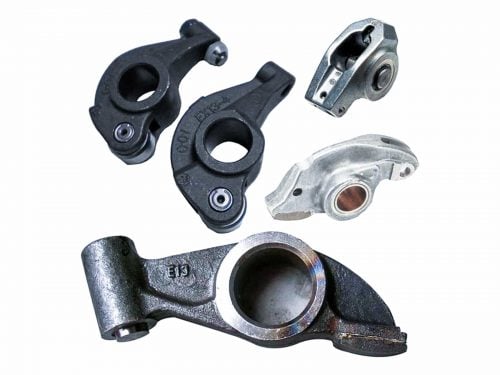

Masterparts offers high-quality oxygen sensors – also called O2 or lambda sensors – for a wide range of vehicle makes and models.
What do oxygen sensors do in a car?
Oxygen sensors constantly measure the level of oxygen in a vehicle’s exhaust emissions. They help regulate the amount of fuel used in combustion.
These small electronic probes play a key role in reducing fuel consumption, maximising engine efficiency and ensuring compliance with CO2 emissions standards.
There are three main types of oxygen sensors – thimble, plantar and wideband. All contain an element made from either titanium or zirconium, in a stainless steel housing.
Depending on the age of the car, one to four sensors are installed on the exhaust, either before, or before and after, the catalytic converter.
Modern vehicles are usually fitted with three- or four-wire lambda sensors. These components contain an integrated heater element to enable quicker start-up times.
How does an oxygen sensor work?
This type of sensor uses the oxygen ions flowing over the element to determine the concentration of unburnt oxygen in exhaust gases.
It then sends an electronic signal to the vehicle’s engine control unit (ECU). Based on the type of signal received, the ECU automatically adjusts the amount of fuel injected into the cylinders.
When the sensor detects high levels of oxygen, representing a lean mixture, the signal transmitted to the ECU is of low voltage. This instructs the control unit to inject more fuel into the air-fuel mixture.
A low concentration of oxygen demonstrates a rich mixture, which generates a high voltage signal from the sensor. At that moment, the ECU stops injecting fuel to create a lean air-fuel mixture.
By consistently measuring and adjusting the air-fuel mixture to a point of complete combustion, the vehicle’s performance is optimal under all engine conditions.
The YouTube video, How oxygen sensor works, provides a more detailed account of the role that O2 sensors play in engine performance.
Signs of a faulty oxygen sensor
Symptoms of a problem with the oxygen sensor can include:
- poor acceleration and erratic idling
- jerking of the vehicle at startup
- difficulty maintaining a consistent speed
- higher than usual fuel consumption
- increased exhaust emissions.
You may see black exhaust smoke, coupled with a strong, sulphurous odour – and the problem may trigger an engine warning light on the dashboard.
If there are signs of failure, oxygen sensors should be replaced immediately, for safety reasons and to prevent stress on the engine.
High-quality oxygen sensors for sale in South Africa
Masterparts supplies lambda sensors from leading manufacturers. Because these components play a critical role, quality is important.
Replacing a faulty oxygen sensor can restore like-new performance to a vehicle’s engine.
Where to get lambda sensors from Masterparts
We offer door-to-door delivery. Alternatively, visit any of our branches in South Africa or in Windhoek, Namibia.
Lambda (oxygen) sensors in and around Cape Town:
Lambda (oxygen) sensors in KwaZulu-Natal:
Lambda (oxygen) sensors in Namibia:
In addition to lambda (oxygen) sensors, Masterparts offers a full range of engine, suspension, steering, braking and electronic parts and spares. Contact us if there’s a part you need and we’ll do our best to assist.







